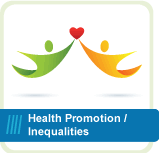Health Promotion/Inequalities
Key Message

 Health Promotion and Health inequalities are key
issues for the UK and the EU more broadly. Whilst the health of
people in Scotland is improving overall, there is still evidence of
significant health inequalities within the poorest sections of the
population. Inequalities exist in terms of mortality, physical and
mental health and wellbeing and access to and use of health
services. Statistics show that those who live in poverty in
Scotland are likely to die 10 years earlier than those who do not
live in poverty.
Health Promotion and Health inequalities are key
issues for the UK and the EU more broadly. Whilst the health of
people in Scotland is improving overall, there is still evidence of
significant health inequalities within the poorest sections of the
population. Inequalities exist in terms of mortality, physical and
mental health and wellbeing and access to and use of health
services. Statistics show that those who live in poverty in
Scotland are likely to die 10 years earlier than those who do not
live in poverty.
Factors or determinants that affect an individual's health and wellbeing are personal characteristics (age, gender, ethnicity, biological inheritance), the physical environment, the cultural circumstances, policies and laws, income, work, behaviour and lifestyle.
Public Health
The public health priorities were published in 2018 by the Scottish Government and COSLA. The priorities reflect a consensus for co-ordinated action on:
- healthy places and communities
- early years
- mental wellbeing
- harmful substances
- poverty and inequality
- healthy weight and physical activity.
For the national perspective on Public Health you will find lots of information within the NHS Scotland site.
There is also information relating to this national iniitative on the NHS Education for Scotland site
Health Literacy
It has been found that people understand and remember only half of what we tell them. The effective practitioner must strive to ensure that the people who use our services have a strong understanding of their health journey, the choices they have and the rationale behind treatment options. That way the can be equal partners in their care.
Health literacy is about people having enough knowledge, understanding, skills and confidence to use health information, to be active partners in their care, and to navigate health and social care systems. Health Literacy is being increasingly recognised as a significant public health concern around the world and has strong connections to health inequalities.
You will find lots of resources and information relating to Health Literacy here
What does this mean for the Effective Practitioner?
The effective practitioner appreciates that every interaction with the patient or client provides and opportunity for health promotion. Using a person-centred approach, it's acceptable to challenge patients/clients sensitively about their lifestyle choices. For example, for someone with liver disease, "have they thought about reducing or giving up drinking?"
It's important to be non-judgemental, be empathetic to the person's personal circumstances and know where and how to refer on if the patient or client is open to change. It is also vital to ensure the patient or client fully understands the information and options available to them.
![]() You can download a copy of
the Health
Promotion and Inequalities learning activities.
You can download a copy of
the Health
Promotion and Inequalities learning activities.
Reflection
Remember, recording your reflections is an important part of the learning process. Take time to structure your thoughts, feelings and any future actions on one the forms available in the Reflective Practice section. Click here to visit the page.
In your reflections you could also consider how your learning relates to the Facilitation of Learning, Leadership and Evidence, Research and Development pillars of practice.
Return to top
